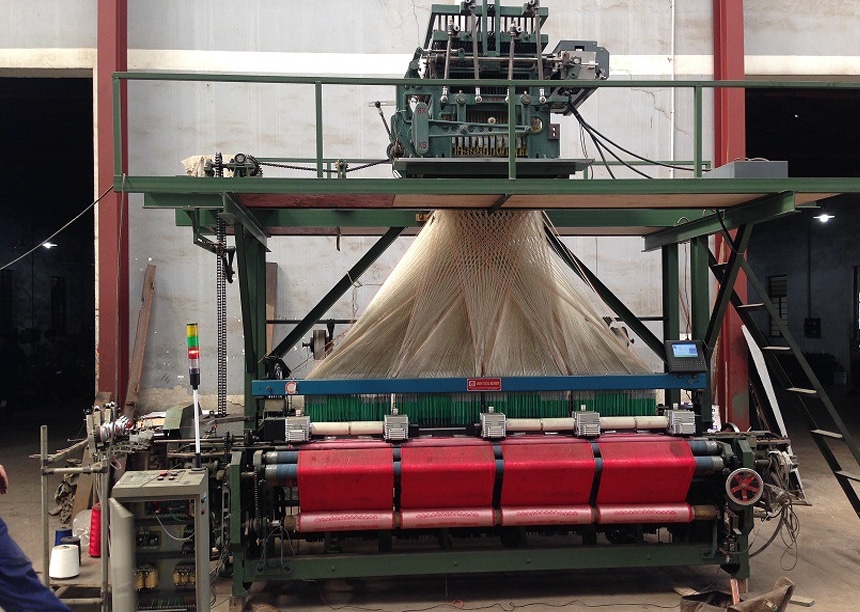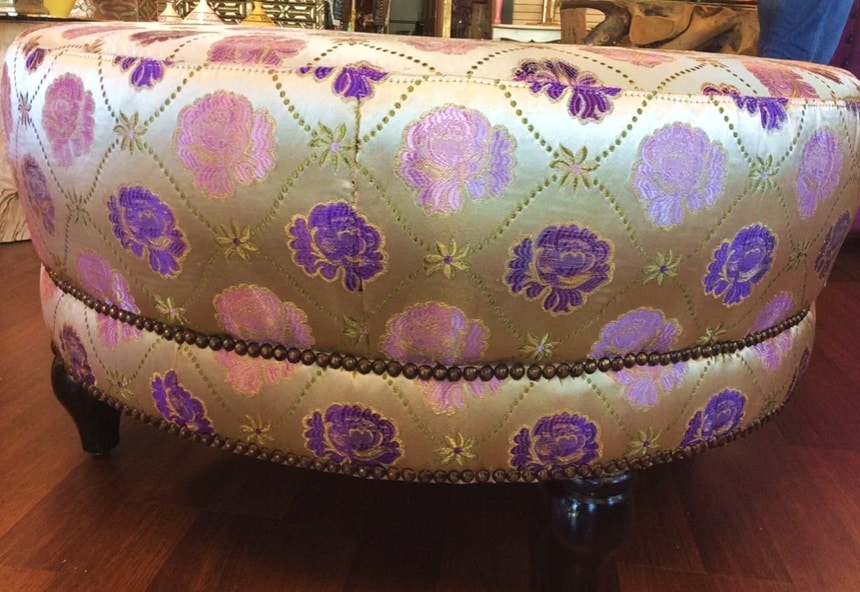

What is brocade? This is a valid question, but one many do not ask. People are usually awed when they come into contact with the material, but rather than striving to learn a lot about the fabric, and they are usually fascinated by its richness, design and beauty.
Delving further into what the brocade fabric is and how it came about would provide a lot of historical knowledge about the fabric and the nations to have contributed to its growth over many centuries.
Though brocades are more popular among all classes of society than they were in centuries past, they are still mostly used to bring opulence and sophistication into décor, with many of these fabrics employed as tapestries and upholstery materials. That aside, they may also be used to make apparel and even serve cultural functions within certain cultures.

Brocade is a material that is usually richly patterned with intricate designs. These designs could be motifs or iconography, depending on the function of the garment. On the first inspection, the brocade might appear embossed or embroidered, but this effect is a function of the weaving done in the manufacture of the material.
The fabric is made using the Jacquard loom, but unlike other jacquard loom fabrics, the patterns are visible only on the front of the fabric, and, as such, brocades are non-reversible.
Brocade could also be made from a variety of materials. Though the traditional brocades are made from silk and are as stunning as expensive, cheaper alternatives made with cotton and synthetic fibers are also popular.
Despite its sophistication, the brocade fabrics can be sewn by hand or with a sewing machine, and even the needles used are normal. It could, however, be taken into consideration that needles like the SCHMETZ Universal Sewing Machine Needles, which is designed to fit all household machines and work for all purposes, are of better standards than most.
Brocade Trusted Source Brocade - Wikipedia Brocade is a class of richly decorative shuttle-woven fabrics, often made in colored silks and sometimes with gold and silver threads. en.m.wikipedia.org making has been linked to China as far back as centuries BC, and during this time, the knowledge of them or how they could be made was hidden to the rest of the world due to the uncommonness of silk outside of china.
However, the growth of the Chinese silk trade allowed for the introduction of the European powers and other Asian states to silk and brocades. This led to many of those powers looking to build their silk industries so much that by the Middle Ages, the Byzantine Empire had become the biggest traders of silk and brocade. This is the reason why many identify the origins and production of brocades with Byzantium.
Though the brocade made in Byzantium were exquisitely woven to express both noble and Christian iconography, the depth and complexity of their designs were nothing compared to those of the Renaissance Italians. It wasn’t uncommon to have the nobility of those days adorn their brocades with precious or semi-precious stones.
However, the popularity of brocades faded with the end of the renaissance period. Some tapestries made with brocades have been preserved; proof of Italian brocade beauty still exist today within many Renaissance-era paintings.
In the early 19th century, the jacquard loom was invented, and this ushered in a period of more efficient brocade production. Thanks to this and the increased commonness of the material, brocades began to lose their association with the nobility and upper class.
However, this detracted from the beauty of the brocades made in no way as the loom even made it possible for more complex designs and patterns to be implemented. It is this for this rich decorative potential that brocades are still coveted and appreciated materials for tapestries, drapes and upholsteries etc.
Brocade fabric also remains very popular with the Indians as materials for ceremonial clothing though outside of India, the material is rarely used in apparel.

Traditionally, brocade was woven on conventional looms before the invention of the jacquard loom. This production method put a lot of pressure on the weavers as it required a lot of effort and attention to detail. However, the effort needed in weaving brocade fabrics has been reduced significantly with the jacquard loom, and many contemporary textile manufacturers even use computerized jacquard looms.
Another area in which brocade production has evolved over the centuries is the fabric used. During the early days of the brocade material in china, silk was the main fabric used, but it was not so popular in the West, which led many western manufacturers to use wool as an alternative. Cotton has also been used in the production of brocade.
In more recent years, synthetic fibers have grown to be quite popular, and their usage has extended to the making of brocade, where the use of polyester and rayon is common. There, however, still exist purists who retain the tradition of making brocades only from silk.
Due to the compromise that has been made over the centuries in the production of brocades, there currently exist many different types of brocade fabric within the textile markets and here are a few of them.
This is the traditional form of brocade, and it is still widely popular today because of the beauty and luster of silk. The durability of the material also plays a part in its sustained popularity.
The use of cotton in making brocade arose from the simplicity and versatility of the material. It is no surprise that cotton brocades are less attractive and much simpler to manufacture than silk brocades. The patterning in cotton brocades is mostly not as complex as that of the silk brocades, and textile manufacturers prefer to use cotton brocades to make casual garments.
This type of brocade features a mixture of cotton and silk fabrics. As a result, the final garment possesses the durability and sheen of silk while staying soft and stretchable. The himru brocade is produced and used commonly in India.
Synthetic brocades are not as popular as silk or cotton brocades, but they are less expensive to produce. It should, however, be noted that, just like the parent synthetic fibers used, synthetic brocades are not very comfortable to wear and are harmful to the environment.
This is a type of brocade in which leftover threads are left hanging from the backside of the brocade fabric.
Unlike the continuous brocade weave, in discontinuous brocades, textile manufacturers weave whatever leftover threads remain from the brocade fabric into additional patterns.
Traditionally, zari brocades features the use of woven threads of gold, silver and copper. However, the zari brocades made by contemporary textile manufacturers utilize synthetic materials that approximate the appearance of these precious metals.

Brocade fabric can be used for many things for many reasons. Its expensiveness and aesthetic appeal make it a favorite for making drapes and upholsteries.
The historical significance of the fabric also grants it relevance in the making of costumes for plays and religious vestments. This serves to emphasize its origins in dress and cloth makings, and it is still being used today for the manufacture of dresses for weddings and other relative ostentatious occasions.
Brocades are almost always elaborately patterned, and this is another reason for their popularity in making decorative garments and flashy dresses.
The brocade fabric might be more complex to produce than other textiles, but it is not very difficult to sew. For starters, the brocade fabrics cut just as quickly as most fabrics but to ensure that this initial process of cutting is not botched, cutters that enhance control and are suitable for left and right-handed people, such as the Fiskars Classic Cutter, should be used.
You could use regular polyester or cotton threads as you wish, and the fabric could be sewn by hand or with a machine. Whether hand or machine is used, a suitable sewing machine needle or a good hand sewing needle should be purchased.
Another factor to take into consideration when sewing brocade fabrics is the fraying of the edges. These frayed edges can irritate the skin, and the ends of the brocade should be finished to prevent this.
While sewing brocade fabrics, extra embellishment could also be added using beads and sequins, while it is pretty standard for manufacturers to provide a lining or underlining to the garment.
Care of the brocade fabric should start from the sewing through the washing and should include the ironing. If the material is sewn by hand or with a mechanical sewing machine, special care should be taken not to wrinkle the fabric. Wrinkles on brocade fabric are notoriously difficult to remove, and one of the first tips in caring for the fabric is to ensure that they are always dried flat. Partly because of this, the material is also usually marked dry clean, but if you are attempting to wash at home, it is advisable to use mild shampoo in place of detergents.
Another reason why the fabric is marked dry clean and why it is difficult to care for is the ironing. Though the brocade fabric is heavy, you cannot use high temperatures when ironing them. Doing so could lead to the soft thread within the garment burning out.
There are many different types of brocades based on the type of material and fabrics used in manufacturing them. These brocade fabrics would also require extra measures to ensure they are well cared for. To ensure that the fabric is well cared for, a cleaner/ owner of the fabric should answer the questions about what is brocade and what is it made of.
The answer to these questions would vary from brocade to brocade, and the answer would invariably be an indicator of the expensiveness of the fabric as well.
Beyond the expensiveness of the brocade fabric and the need for proper care, knowledge of brocades and how they can be used also serve to educate people on the rich history of the material and how far they’ve come in fashion and décor.